Foliar Diseases of Hardwoods
Black Spot of Elm
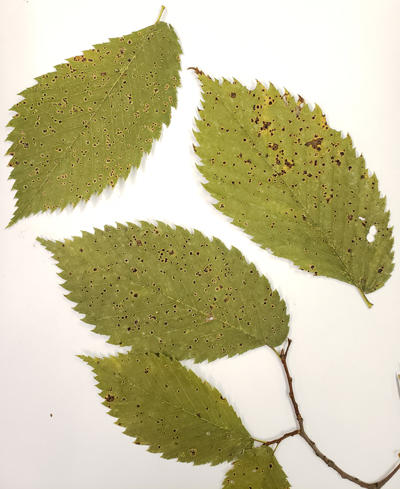
Elm leaves with black spot
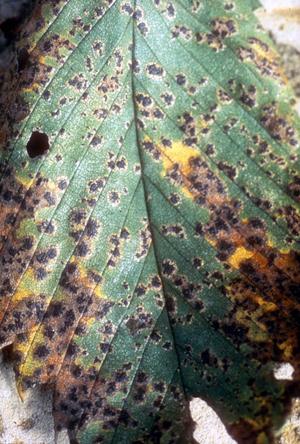
Black spot of elm on an elm leaf in mid summer.
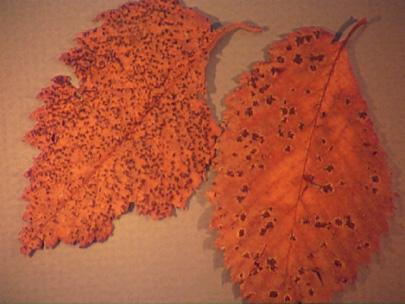
Black spot of elm leaves that had fallen off the tree and collected in the spring.
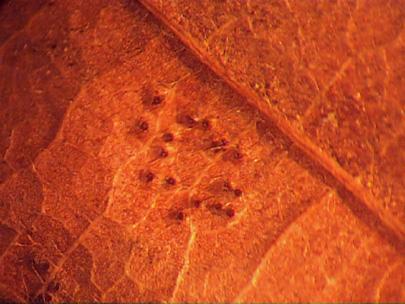
In the spring, perithecia are produced on the lower surfaces of fallen leaves where the black spots are located. The perithecia produce ascospores that infect new leaves.
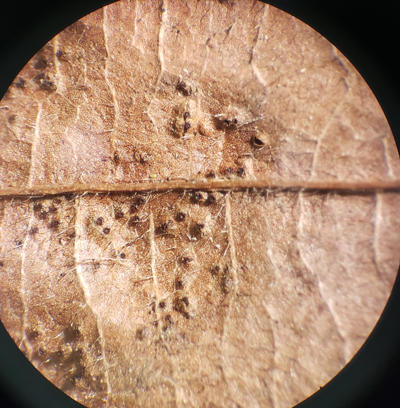
Another view of the bottom surface of an infected elm leaf with the necks of the perithecia showing.
Apple Scab
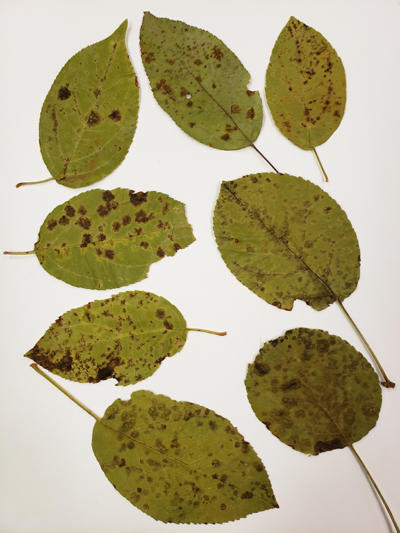
Apple leaves showing symptoms of apple scab caused by Venturia inaequalis.
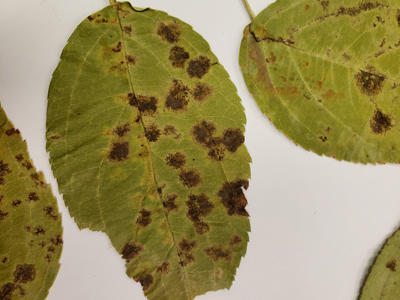
Apple leaves showing symptoms of apple scab.
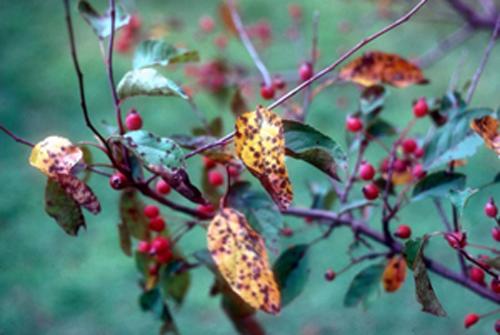
The fungus also attacks flowering crab apple trees. Leaves show symptoms like this in mid to late summer.
Aspen Twig Blight
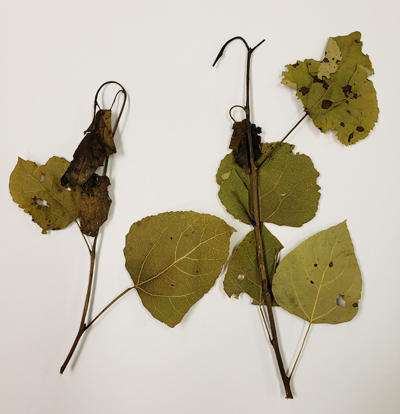
Aspen twig blight starts off as a leaf spot and then moves down the petiole and into the stem.
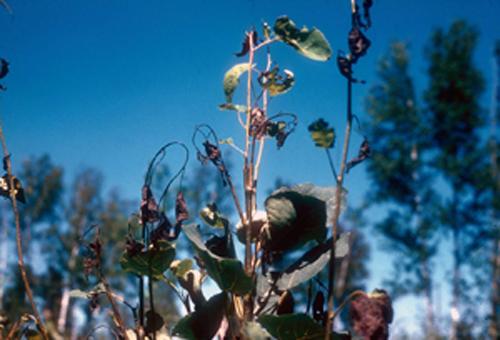
Aspen twig blight in the field showing dieback of the current years shoots
Bur Oak Blight
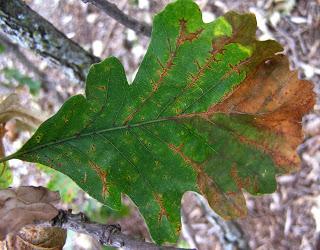
Leaf veins turn brown and large necrotic lesions develop that are wedge-shaped and delimited by leaf veins. Fruiting structures, small black pustules, with conidia develop along leaf veins and on leaf petioles.
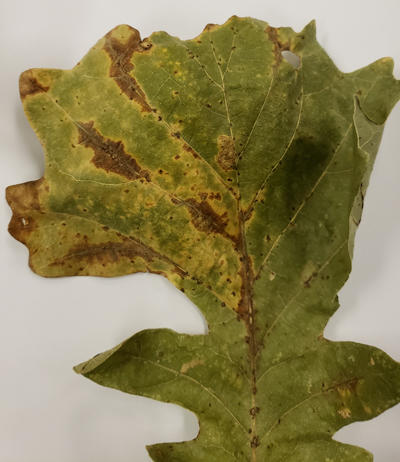
Another leaf showing symptoms of bur oak blight.
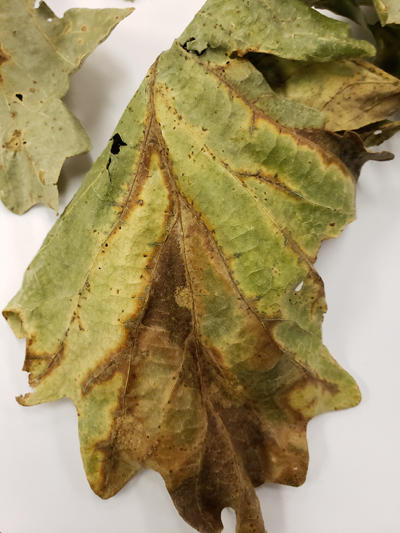
Bur oak blight symptoms on the bottom of a leaf.
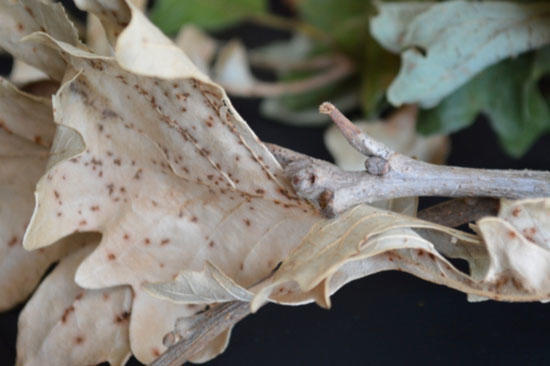
Fruiting structures, small black pustules, that produce conidia develop along leaf veins and on leaf petioles. Infected leaf petioles can remain on the tree until the following year. Spores from these asexual fruiting bodies infect new leaves.
Bronze leaf disease
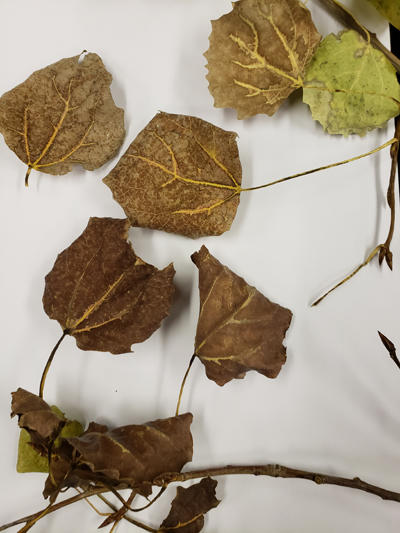
Leaves showing early symptoms of bronze leaf disease
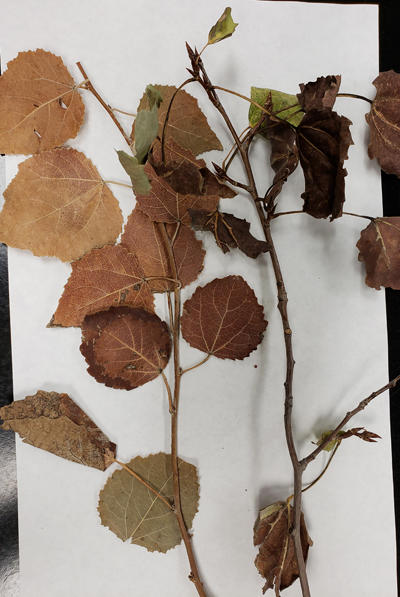
Leaves progressively turn darker brown after infection.
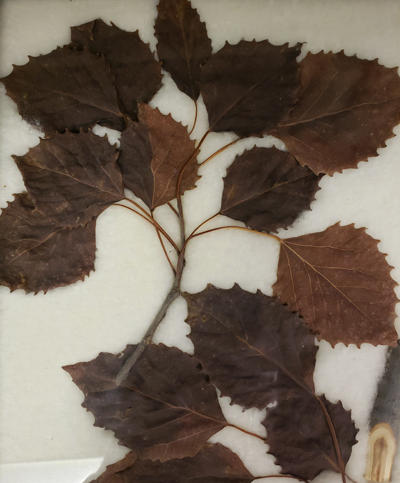
Dark brown leaves adhere to the branches during the winter.
Septoria on poplar
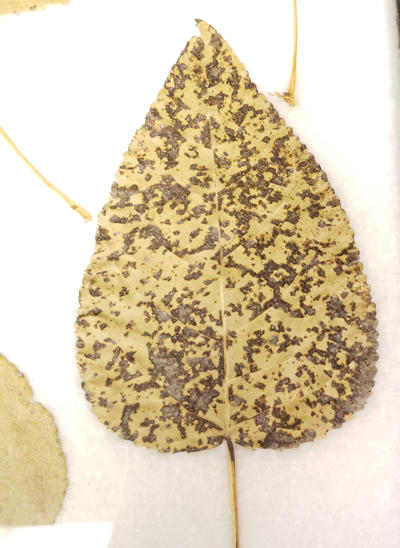
Symptoms of Septoria leaf spot on a poplar leaf.
Marssonina on poplar
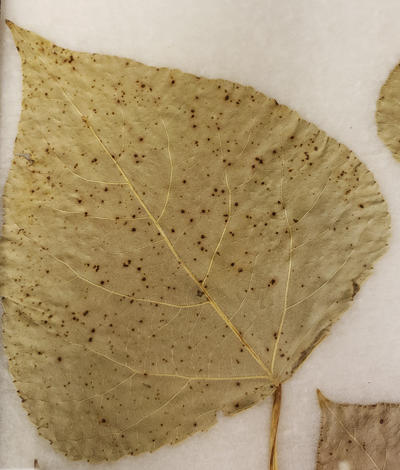
Symptoms of Marssonina on poplar.
Sooty Mold
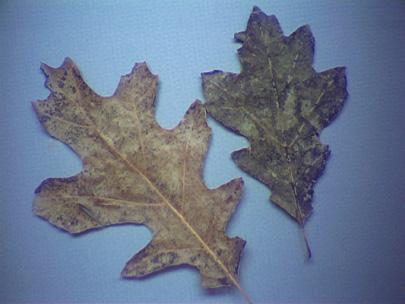
Black fungal growth occurring on aphid exudates present on oak leaves.
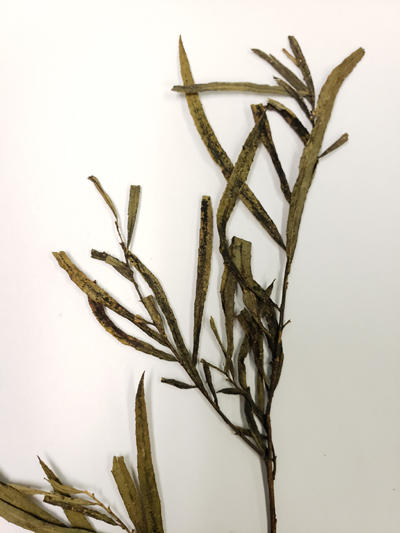
Sooty mold growing on willow.
Insects can also cause damage to leaves. For comparison, here is insect damage on oak.
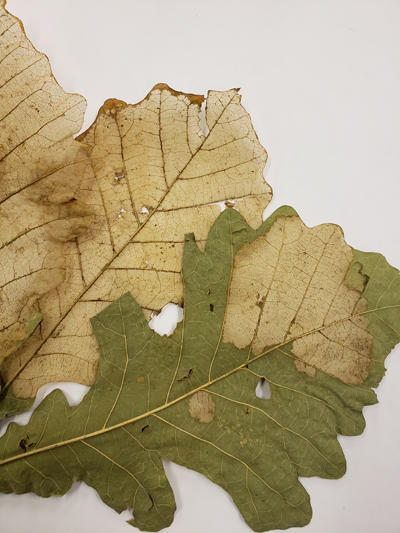
Here is damage by the oak skeletonizer caused by the feeding of the larval stage of a moth.